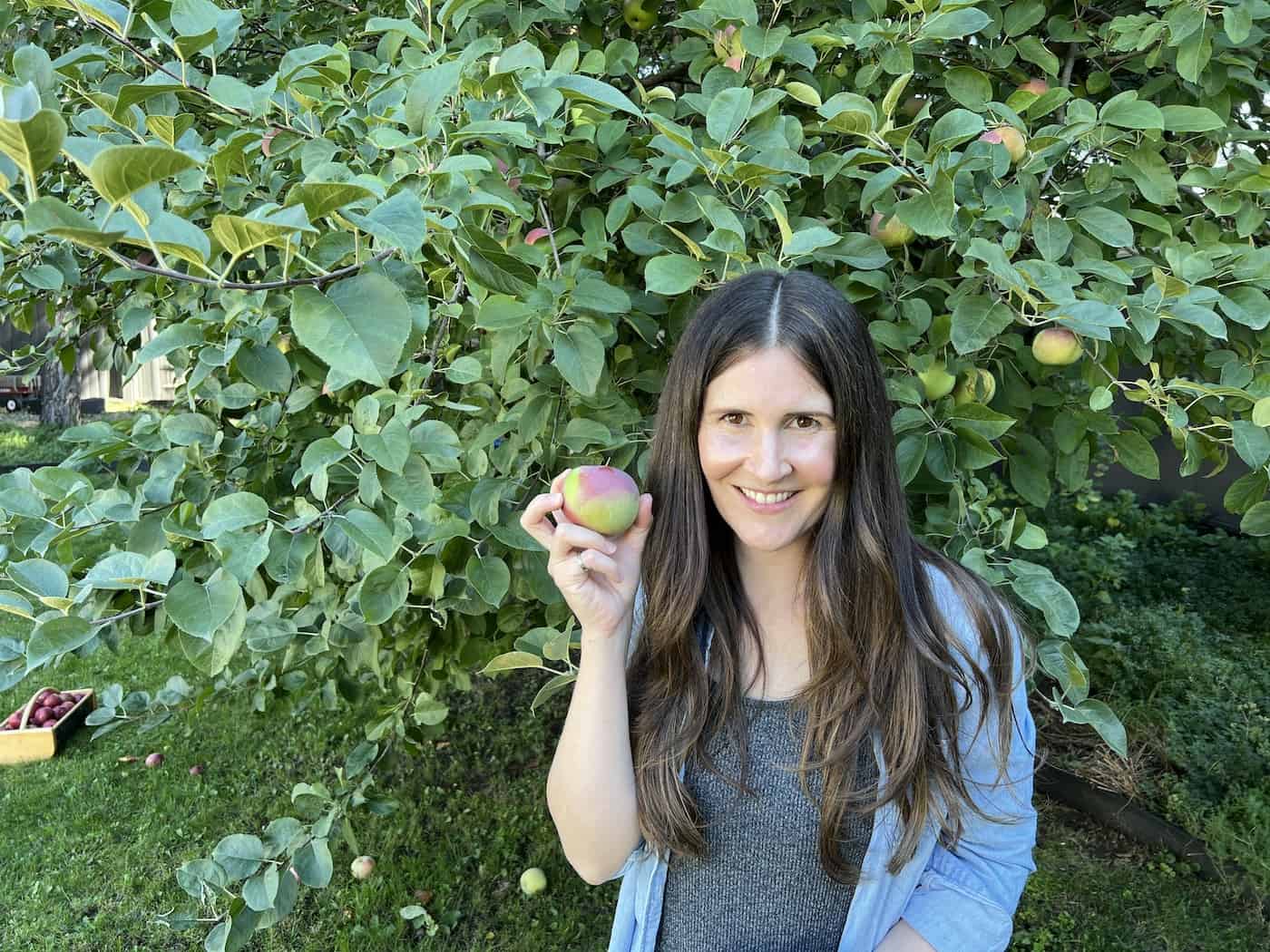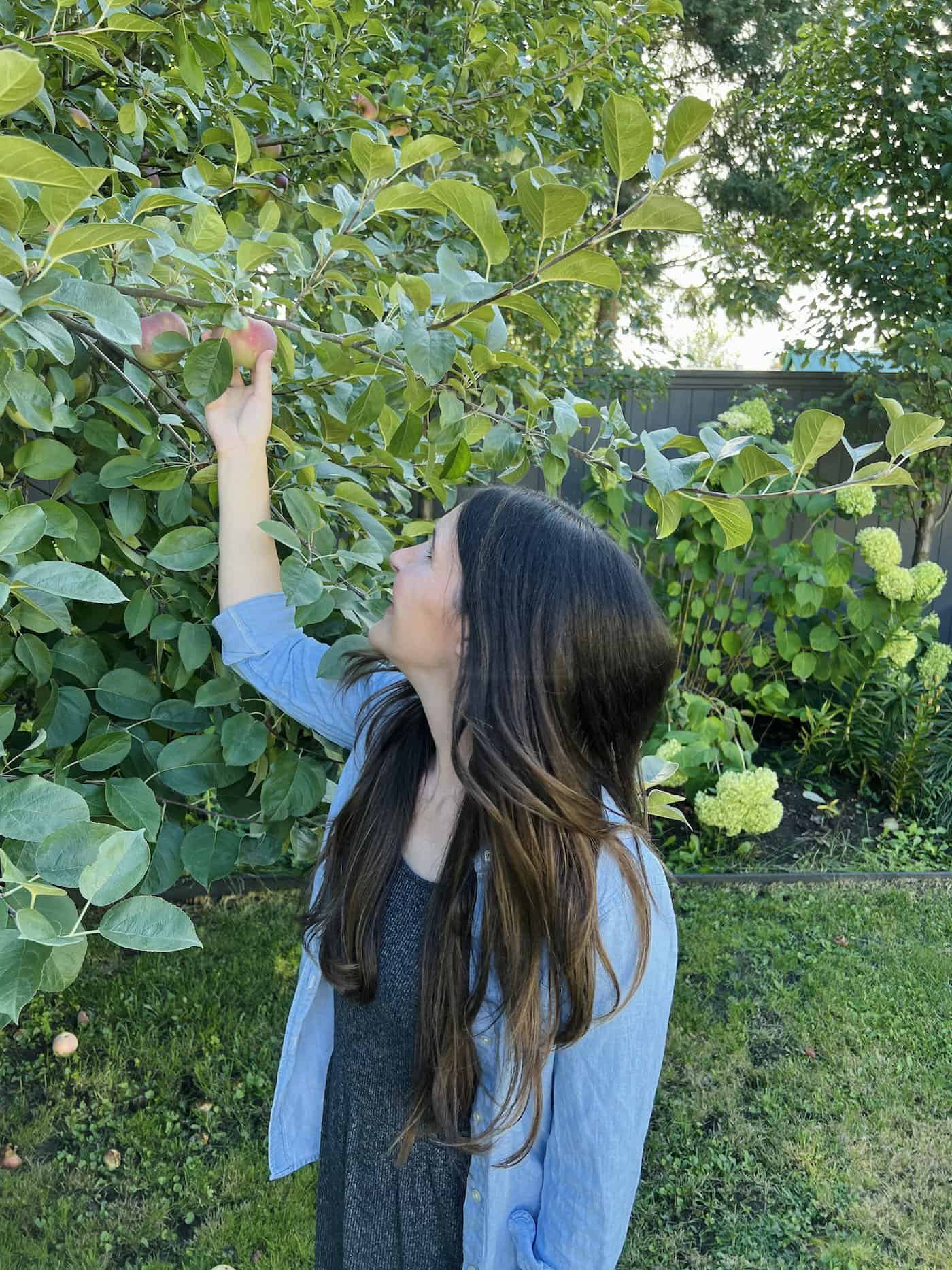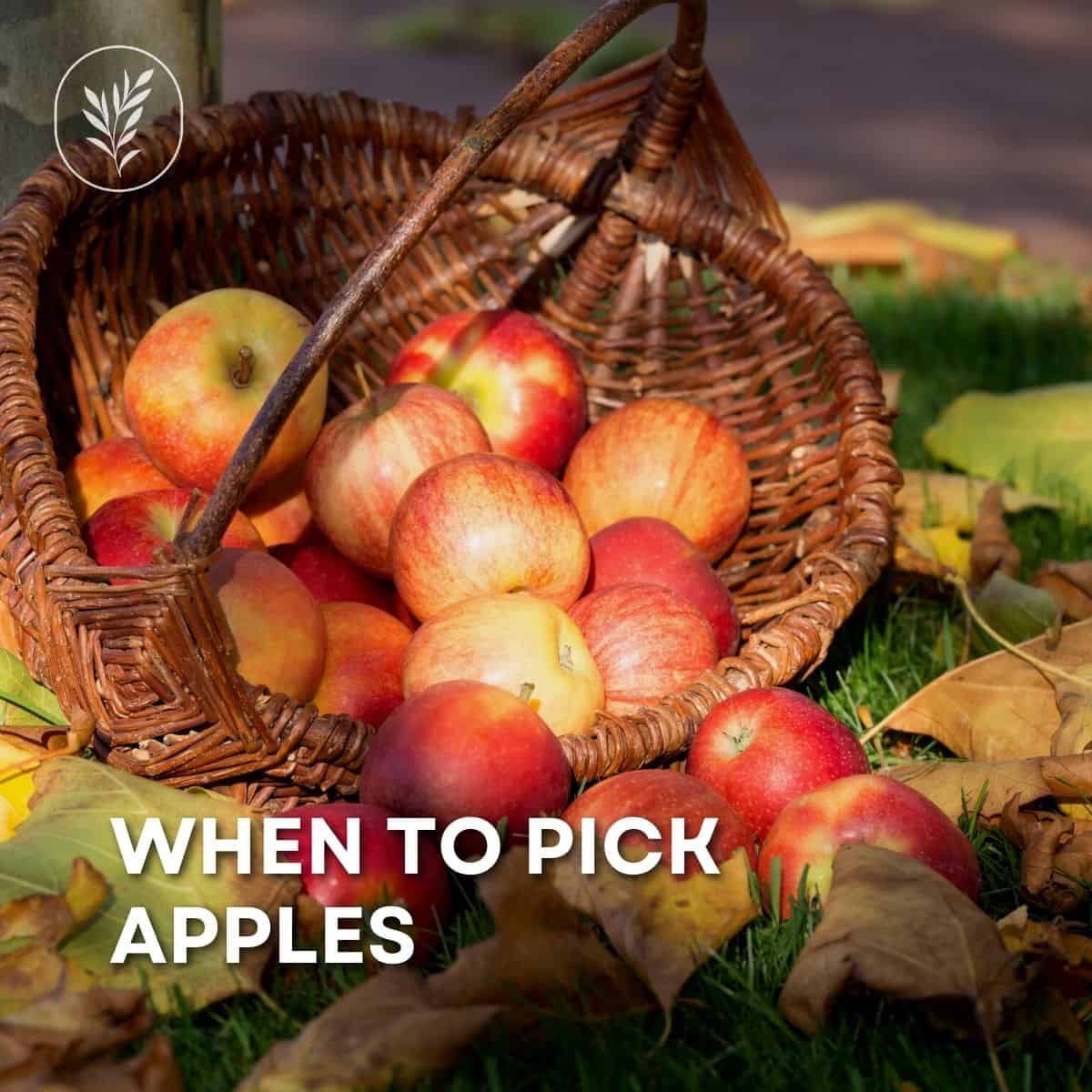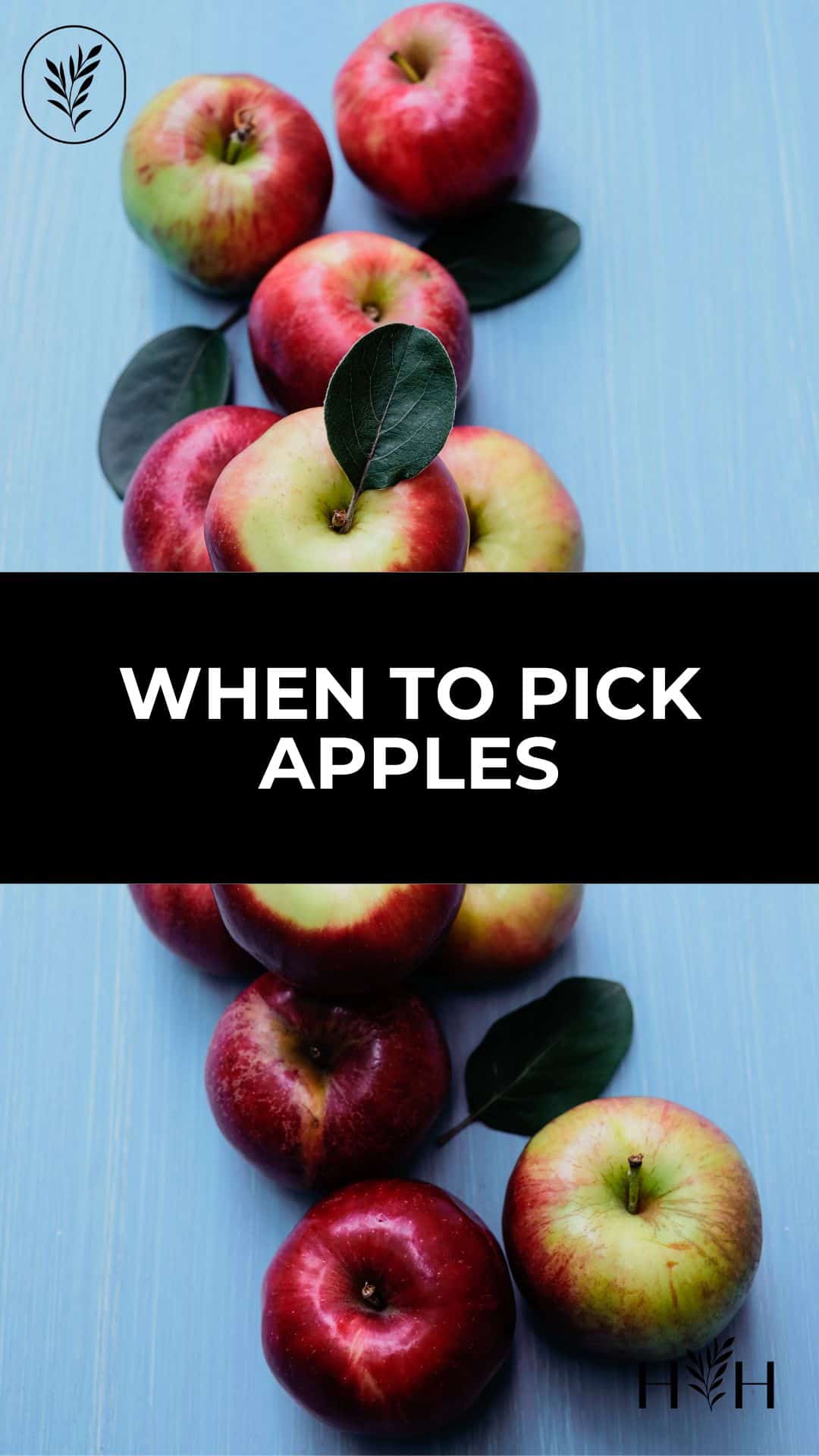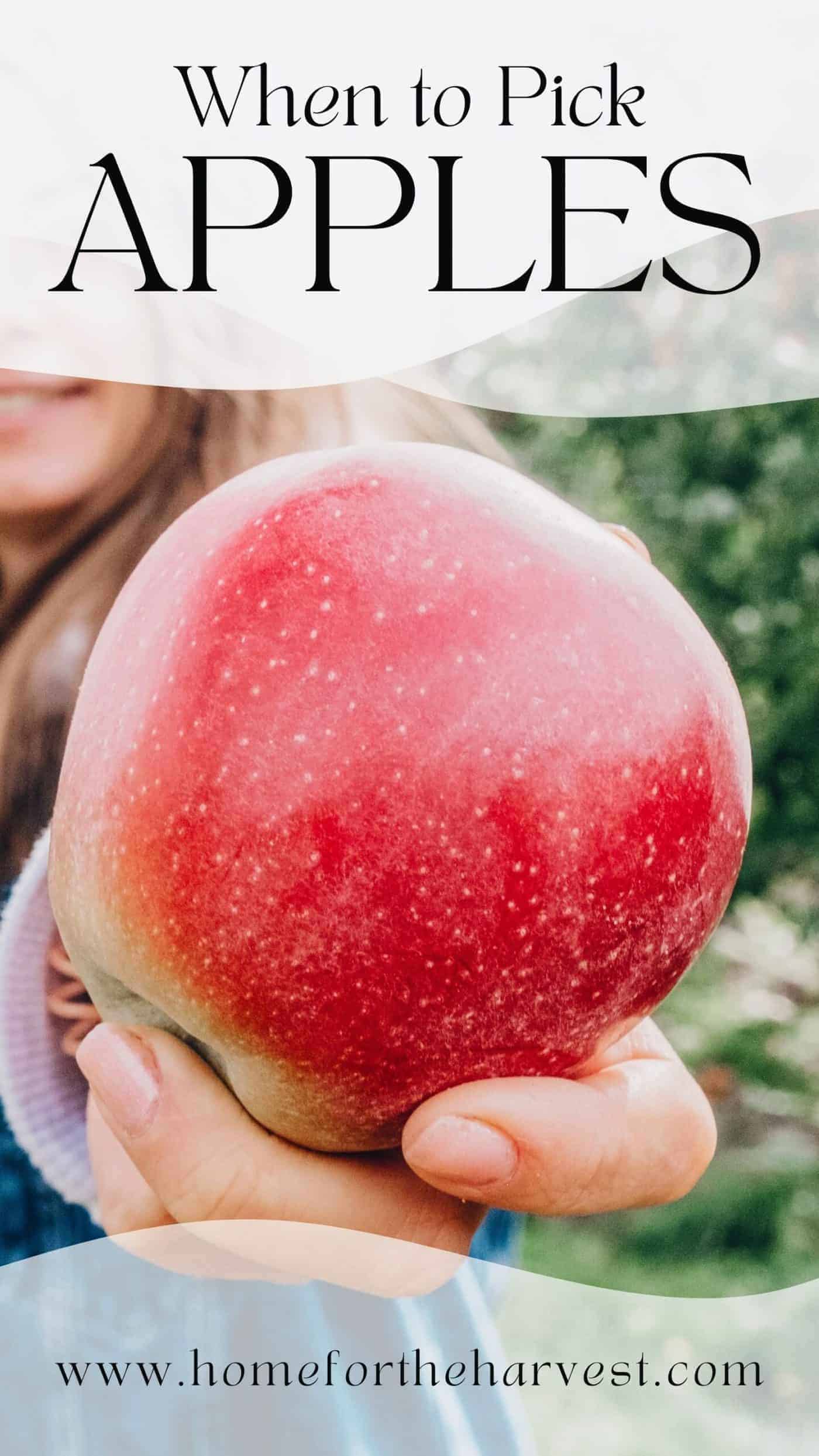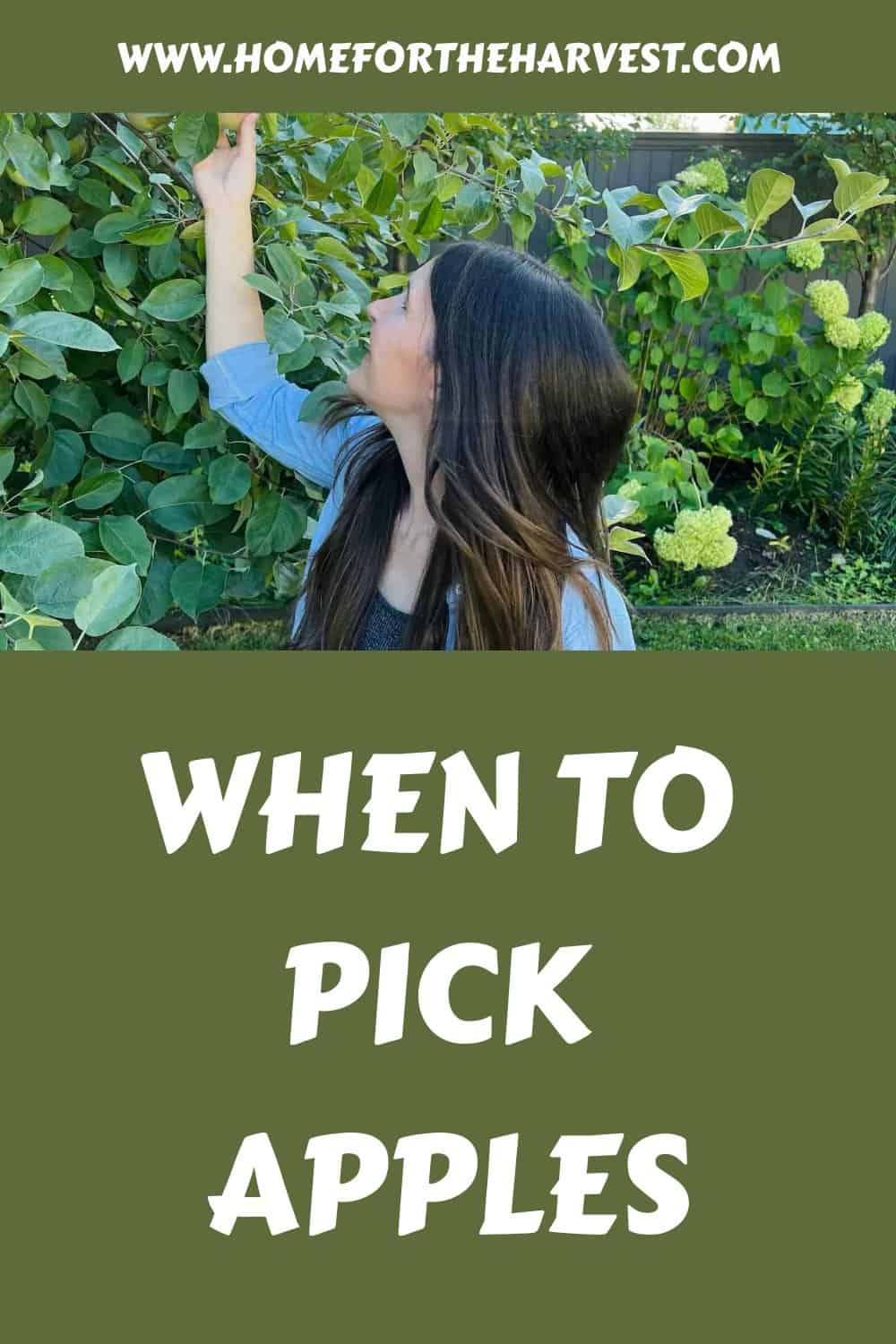The month of September is generally the best time of year to pick apples. While different varieties of apples ripen at different times, and the climate varies the harvest from year to year, early fall is almost always a reliable time for harvesting apples.
Early varieties like Gala apples and McIntosh are ready from late August to mid-September in most temperate apple-growing climates. Mid-season varieties like Granny Smith and Fuji are ready in late September to early October. Late varieties like Cripps Pink and Fuji ripen in late October-November (perfect for late apple-picking trips).
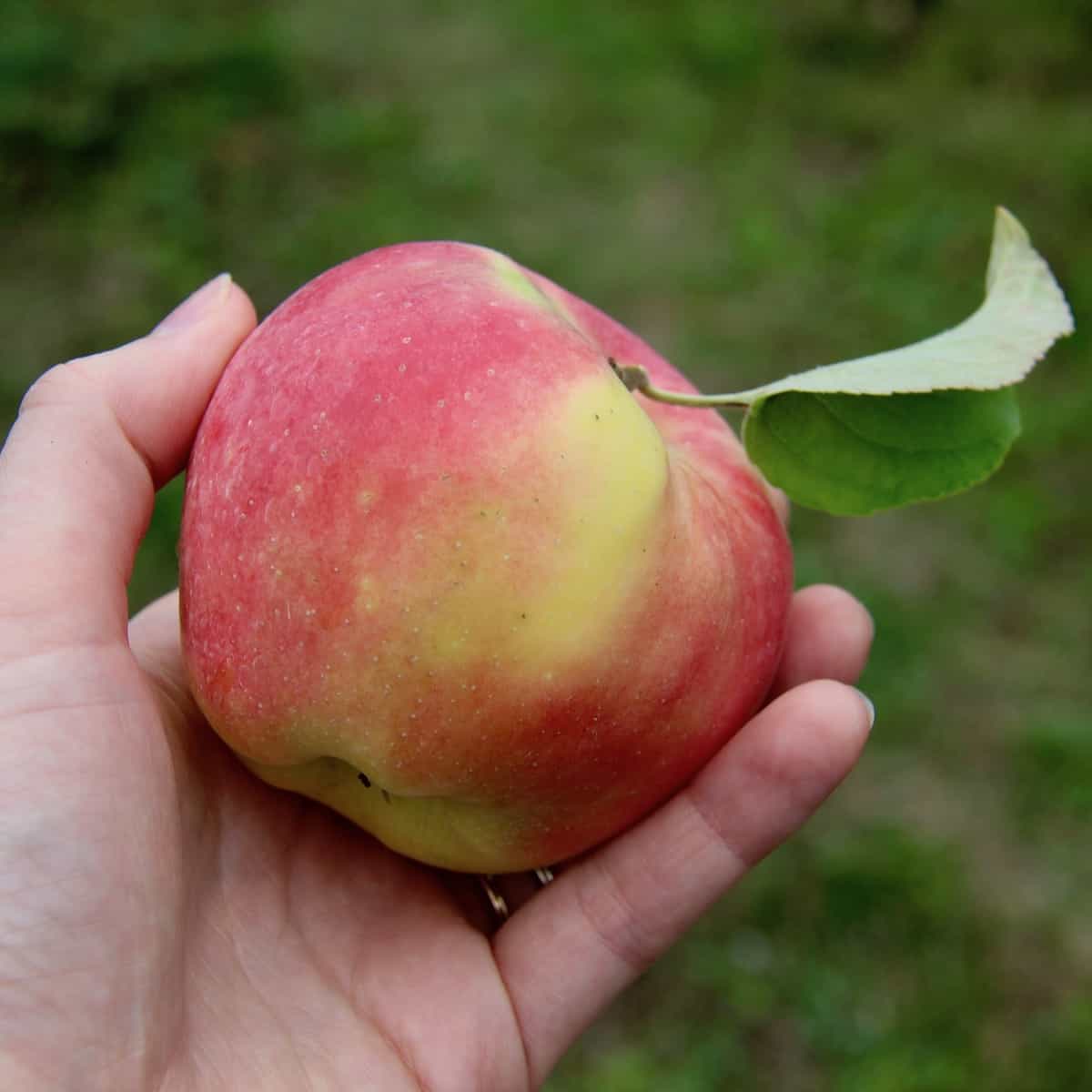
When are apples ready to be picked?
Apple ripening depends on many factors, including the cultivar of the apple and the weather during the growing season. While annual patterns are well established, farmers don’t set an exact harvest date for their crops. Apple growers observe the ripening apples for maturity before making the decision about when to harvest them.
Apples picked too early are tart, small, and lacking in peel color. Apples picked too late can be soft, mealy, and prone to quick deterioration in storage.
So, when does the apple-picking season start? Fortunately, apples do give quite a few indications to show they’re ready. But….not all apples will show all signs. There are lots of exceptions. Growers get better at determining apple ripeness as they gain experience.
Signs of apple ripeness
Here are some signs of apple ripeness:
- The apple stem separates easily from the branch. Under-ripe apples don’t come off the tree easily.
- Check the firmness. Mature apples are firm and crisp but not hard. Apples shouldn’t be soft or easily bruised.
- Take a bite! The taste of ripe apples is crisp and juicy, not starchy and tangy. An apple’s acidity and starch content decrease as it ripens.
- The background peel/skin color (the part of the apple skin that isn’t red) changes from green to yellow (unless it’s a green apple variety).
- The color of the peel inside the stem indentation changes from green to yellow.
- The apple’s flesh is cream or white instead of light green.
- The apple’s seeds turn from white to brown.
So how do you tell if an apple is ready to be picked off the tree? Pick one off the tree and observe it! The apple should come off the tree easily and will usually be red or yellow. Cut the apple in half to check for white flesh and brown seeds. The apple should taste sweet rather than overly sour.
Different types of apples ripen at different times and show different indications of maturity. Climate variations in temperature, water, and sunlight all affect the ripening pattern of apples. For example, the red color in apple peels is brighter when fall days are warm and sunny but nights are cool and crisp. Even apples on the sunny side of the tree can be ready for picking before apples that are in the shade. Local nurseries and State Extension Offices are a good sources for learning about apple ripening patterns in your area.
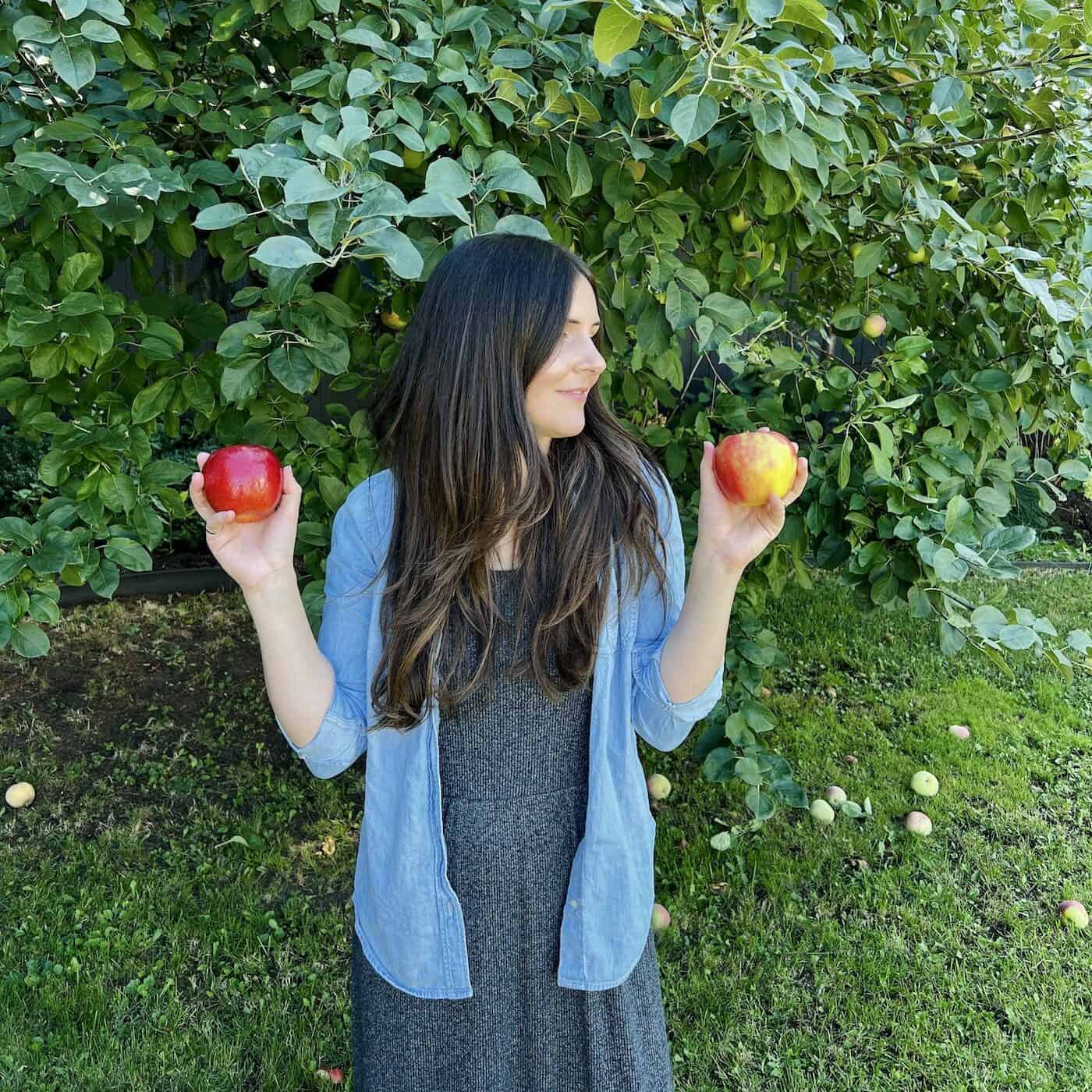
Apple season: The annual autumn harvest of ripe, local apples
What season do apples grow in? Apple season is around the month of September. While peak harvest generally occurs in September for most of the apples we see in stores, there are some cultivars that are ready as early as late July and others that aren’t ripe until October or even November! Check out the lists below for an overview of which apples ripen in which month.
So when is the overall season for apples? Fresh apples are available from late July through to November. Each apple variety has its own ripening requirements, and some just take a lot longer to ripen than others! Different varieties are grown in different regions, and the varieties grown in one region will have a range of maturity dates.
In terms of apple season, Fall is also the best time to plant new apple trees! Try a few different varieties of ripe apples this autumn, and choose a few trees to plant in your yard once you’ve picked your favorites.
Summer apples: Early apple varieties
Summer-ripening apples are ready in late July, August, and early September. Summer apples generally don’t store well, and are therefore less likely to be sold in bulk.
- Anna Apple (July)
- Gravenstein Apple (July)
- Lodi Apple (July)
- Dorsett Golden Apple (July-August)
- Vista Bella Apple (July-August)
- Early Blaze Apple (August)
- Paula Red Apple (August)
- Ginger Gold Apple (August-September)
- Ozark Gold Apple (August-September)
Look for summer apples at specialty apple orchards or inquire at the local farmers market.
Fall apples: Mid-season apple varieties
Fall-ripening apples are generally picked in September and October. Fall apples generally do store well, and we are, therefore, more used to seeing fall varieties in the grocery store. Here are some classic fall apple varieties:
- McIntosh Apple (September)
- Honeycrisp Apple (September)
- Cortland Apple (September)
- Golden Delicious Apple (September)
- Ambrosia Apple (September)
- Jonathan Apple (September)
- Empire Apple (September)
- Jonagold Apple (September-October)
- Gala Apple (September-October)
- Red Delicious Apple (September-October)
- Cox’s Orange Pippin Apple (September-October)
Fall apples (above) are the classics for “going apple picking”, as you’ll be able to wear your cozy sweater and flannel. And don’t forget the adorable harvest basket!
Winter apples: Late-season apple varieties
Late-season apples, or winter apples, are ready at the end of the apple season. These apples typically are large and are often good keepers, storing for months at a time. Here are some popular winter apple varieties:
- Fuji Apple (November)
- Braeburn Apple (November)
- GoldRush Apple (November)
- Newtown Pippin Apple (November)
- Wolf River Apple (November-December)
- Enterprise Apple (November-December)
- Pink Lady Apple/Cripps Pink Apple (November-December)
How to pick apples by hand off apple trees
Apples are picked by hand, even in a commercial apple orchard. Some growers like the “Twist & Lift” technique – in which you gently twist the apples off, lifting them upwards to separate the apple’s stem from the branch. Others roll the apple upwards first and then twist it. We were also taught just to gently turn apples upside down. Most people agree that apples shouldn’t be pulled straight away from the branch.
The stem should separate from the branch easily if the apples are mature. Treat fruit gently. Try not to drop the apples, and don’t let them be thrown. Apples bruise easily. Bruised apples do not store well and often can only be quickly used up in apple juice or sauce.
Place the apples directly into a clean container. You can use an old bucket or bring along a photo-ready harvest basket to hold your apples:
- Wooden Apple Bushel Baskets, by New Hampshire’s Peterboro Basket Company
- Wooden Carry-All Harvest Basket, by Terrain (Made in the USA)
- Decorative Bushel Basket, at Michaels Crafts
Apple-picking can also be a great time to take family photos (just in time to have Thanksgiving or Christmas cards made to send to family and friends).
More about apple ripening
Sometimes all the apples on one tree will ripen at roughly the same time. If this is the case, it’s fine to pick them all at once. Some apple trees, however, ripen their crop over a few weeks. These trees will need to be picked a few times.
Apple ripening is also affected by each apple’s location on the tree and how well the tree is pruned for sunlight and air movement. Fruit on the top of the sunny side of the tree can ripen a week or two before fruit grows low inside the shady leaf canopy.
Apples that have a few scuffs or specks (but are otherwise intact) are usually fine for storage. Apples with bruises or visible decay won’t store well. Apples that get bruised during picking can still be eaten, they’re just best used for making applesauce or other yummy treats.
In climates with harsh winters, it’s best to pick all the apples off a tree by the end of October. Warmer climates may allow for ripe apples to remain on the tree from August-December.
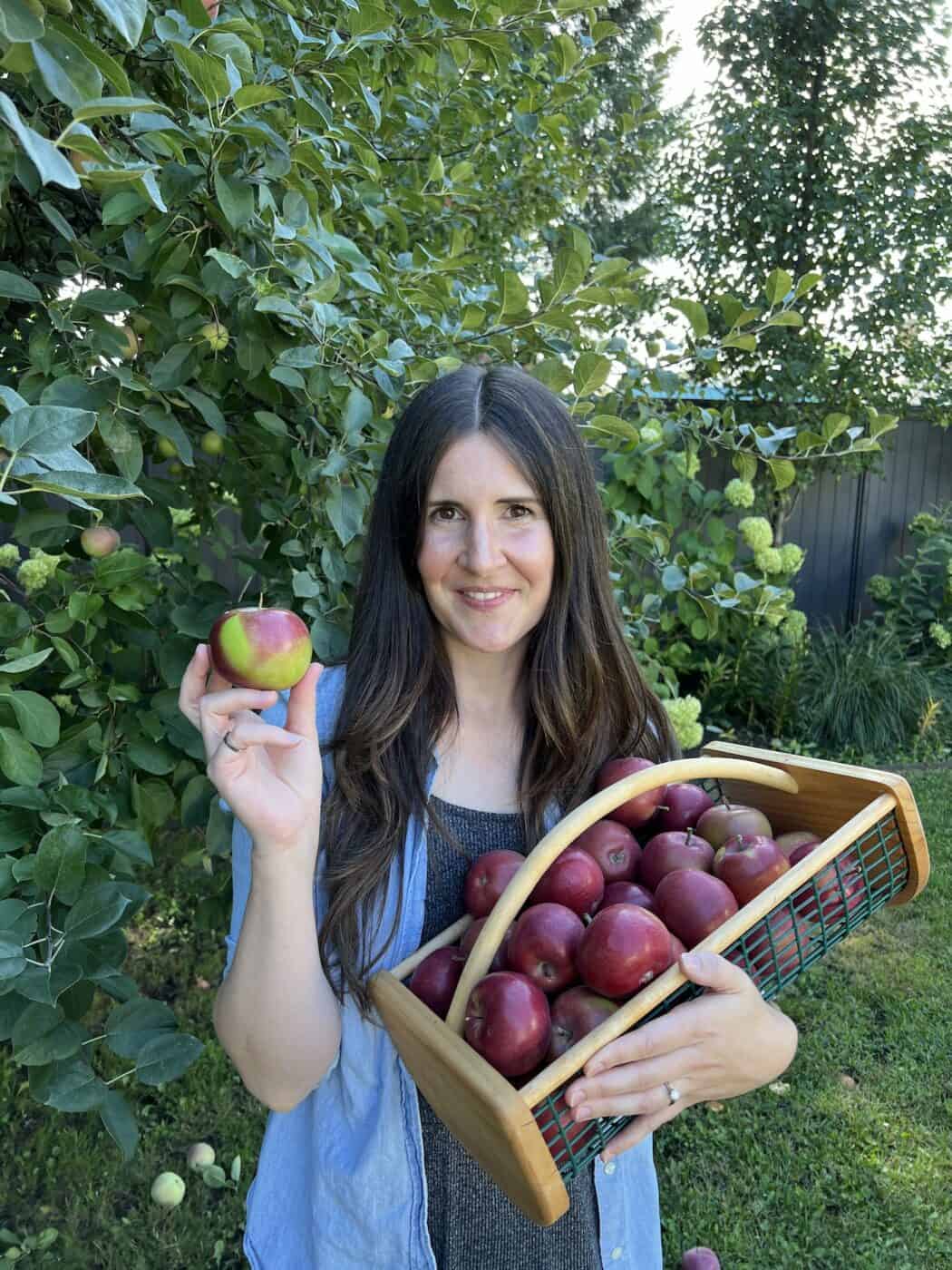
Do apples ripen after picking?
Apples that have reached sufficient maturity continue to ripen even after they are no longer on the tree. If an apple falls off a tree when it’s too young, it won’t continue to ripen. Very young apples won’t ripen in storage.
It’s important to note that a “mature” apple isn’t necessarily ripe. Maturity in apples only indicates that the fruit has developed to the point where it will finish ripening on its own, even if removed from the tree. A “mature” apple is not necessarily “ripe” yet.
Apples for storage should be harvested once they are “mature” but before they are perfectly ripe. Apples for fresh eating can stay on the tree right until you’re ready to eat them!
Picked apples do lose moisture once they’re off the tree (this is why grocery-store apples are covered in thin sealing wax). Picked apples also don’t change their color much during storage.
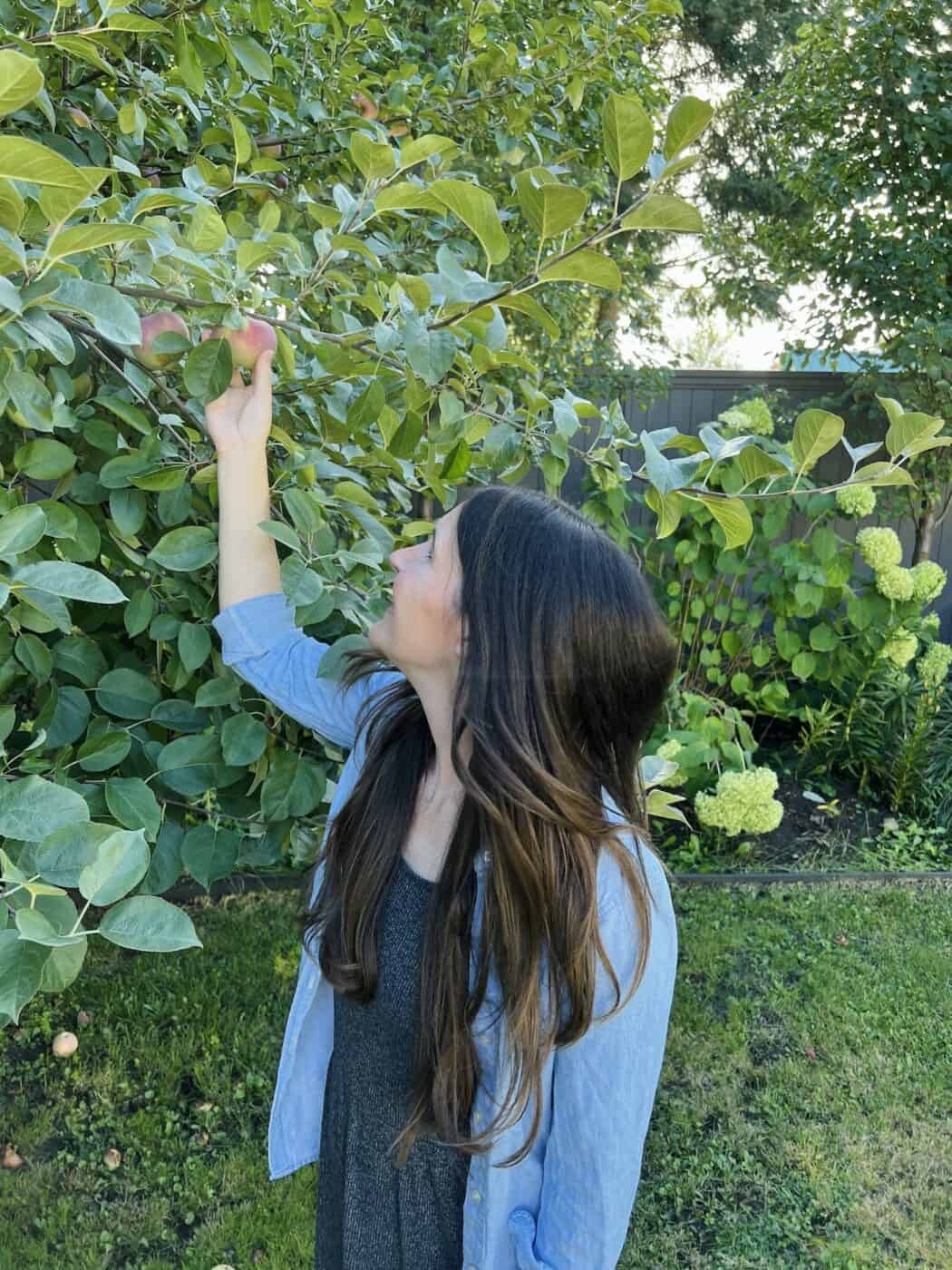
Effects of frost and freezing temperatures during apple picking season
Apples are not necessarily helped or harmed by a light frost. If the apple is ready, it should be picked. Apples don’t need a frost to sweeten them up. There are many apple varieties that are naturally quite sweet when ripe. It’s also true that a light frost won’t ruin the apples.
Apples that freeze solid on the tree are a different story. Apples that have been frozen don’t store well at all. If you’ve got apples that have frozen and thawed on the tree but are otherwise ok, they may be ok for apple juice, cider, or applesauce. Try to avoid using them in baked goods such as apple pie or apple cider donuts.
Apples on the tree will tolerate light frosts (a temperature of 28 ̊F or lower) with no apparent injury. However, severe frosts (25 ̊F or lower) will damage fruit.
University of Wisconsin – Extension, Teryl R. Roper
How the pros decide when to pick apples
Professional tree fruit growers have a few scientific tests at their disposal to help them decide when to pick apples. Apple maturity can be tested in a laboratory for starch, firmness, soluble solids concentration, acidity, and background color.
For immediate consumer consumption, the presence of background color, starches in the range of 4.5-6.0, sugar content above 13 percent, and firmness readings greater than 13 pounds should meet consumer expectations.
Penn State Extension, Fruit Harvest – Determining Apple Fruit Maturity
Growers who sell fresh apples at specialty markets generally test for the sweet-tart flavor and bright color, while growers who sell bulk apples for storage are more likely to test for starch or firmness.
Firmness is tested by using an instrument to measure the amount of pressure required to puncture the apple’s skin. Starch is tested by applying an iodine solution to the cut apple surface. The iodine turns the starch molecules a dark color. The more starch that is observed, the less ripe the apple is.
